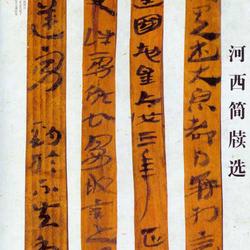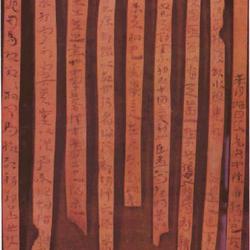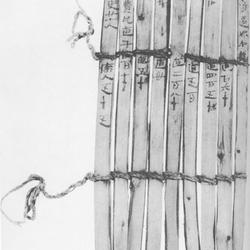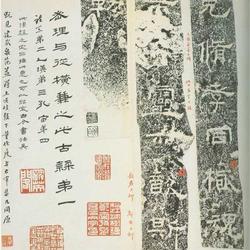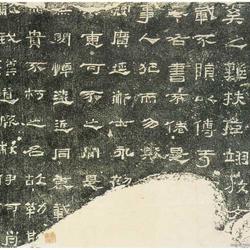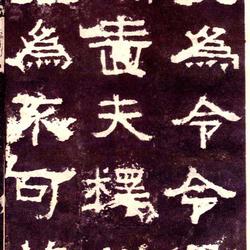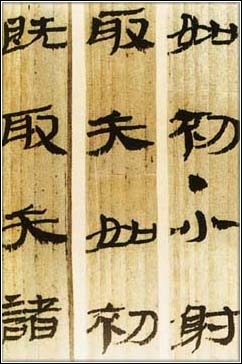 There are two major systems of calligraphy in the Han Dynasty, one is inscriptions on tablets, and the other is ink on slips and slips. They are all books and documents before paper was invented or widely used. Due to different materials, different writing tools, different contents, different shapes and different identities of the writers, they show different artistic styles. The text content written on Han bamboo slips is either a letter or an official report, so it is informal and hasty. Han bamboo slips are limited by their long and narrow faces and small handwriting. However, the composition and layout can still be ingenious, well-proportioned and free-flowing. The characters of Han bamboo slips include seal script, Li script, Zhen script, Xing script, and Cao script (Zhangcao). Han Bamboo Bamboo Slips were not so constrained in writing ideas, so they showed rich creativity and eventually became the transitional calligraphy style that transformed from seal script to Xingji - Han Bamboo Bamboo Slips. A large number of ink marks appear in "Juyan Han Slips" and "Wuwei Han Dynasty Medical Slips", which can be compared with Dunhuang's "Dunhuang Han Paper Ink Marks". The style is similar to regular script, running script and other calligraphy styles. The art of calligraphy seen from bamboo slips is the first-hand information for studying calligraphy of Qin and Han Dynasties.
There are two major systems of calligraphy in the Han Dynasty, one is inscriptions on tablets, and the other is ink on slips and slips. They are all books and documents before paper was invented or widely used. Due to different materials, different writing tools, different contents, different shapes and different identities of the writers, they show different artistic styles. The text content written on Han bamboo slips is either a letter or an official report, so it is informal and hasty. Han bamboo slips are limited by their long and narrow faces and small handwriting. However, the composition and layout can still be ingenious, well-proportioned and free-flowing. The characters of Han bamboo slips include seal script, Li script, Zhen script, Xing script, and Cao script (Zhangcao). Han Bamboo Bamboo Slips were not so constrained in writing ideas, so they showed rich creativity and eventually became the transitional calligraphy style that transformed from seal script to Xingji - Han Bamboo Bamboo Slips. A large number of ink marks appear in "Juyan Han Slips" and "Wuwei Han Dynasty Medical Slips", which can be compared with Dunhuang's "Dunhuang Han Paper Ink Marks". The style is similar to regular script, running script and other calligraphy styles. The art of calligraphy seen from bamboo slips is the first-hand information for studying calligraphy of Qin and Han Dynasties.

